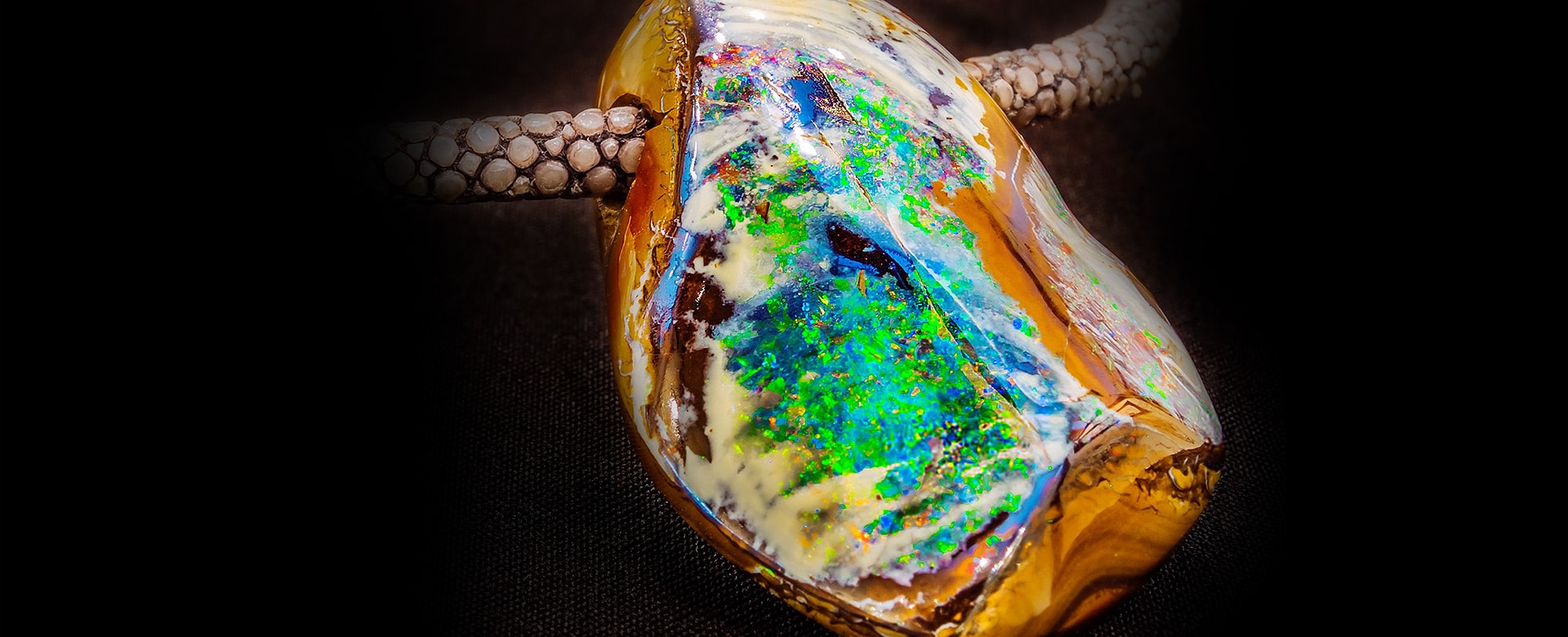Article Highlights
- Opal is a unique gemstone known for its stunning play of colors.
- Opals are found in various locations, but Australian opals are the most prized.
- Opals have both metaphysical and practical uses in jewelry and healing practices.
Opal is no ordinary gemstone. Imagine holding a rainbow in your hand – that’s what it feels like to gaze into a fine opal. This mesmerizing effect is known as “play-of-color,” where a myriad of hues dance across the stone’s surface. It’s like having your personal light show, right in the palm of your hand.
Types of Opal
The world of opal is vast, with many unique names to describe its various forms. Have you ever wondered why terms like fire opal, black opal, or boulder opal exist? There’s a fascinating logic behind these names that reflect their characteristics and origins. This section will guide you through the enchanting vocabulary of opal types, illustrated with stunning images to bring these terms to life. Let’s explore!
Main Categories of Opal
1. Precious Opal
Precious opal is renowned for its dazzling play-of-color, showcasing vibrant flashes of yellow, orange, green, blue, red, or purple. This phenomenon makes it a coveted gemstone.
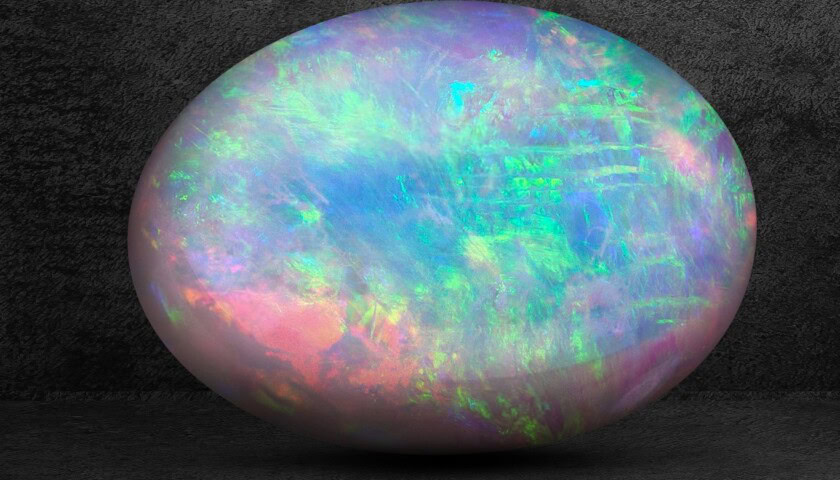
Its value is determined by color intensity, pattern, and visibility from different angles. Though rare, precious opal is mainly mined in Australia, with other sources including Ethiopia, Mexico, and Brazil.
2. Common Opal
Common opal lacks the play-of-color seen in precious opal, giving it a more understated appearance. Despite this, it can still exhibit attractive colors and be polished into beautiful gemstones.

Common opal is found worldwide and is often used in jewelry for its subtle beauty.
3. Fire Opal
Fire opal, typically from Mexico, is known for its vibrant yellow, orange, or red body color. While it might not always display play-of-color, its fiery hues are striking and desirable.
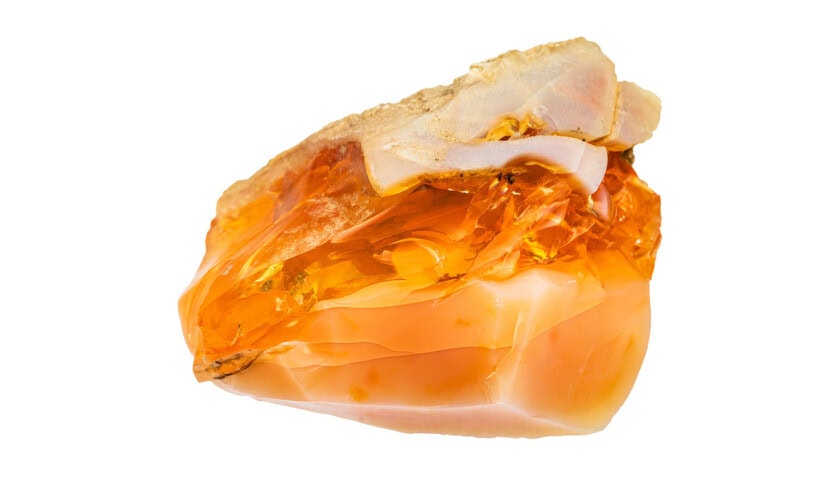
Some fire opals do show a play-of-color, earning them the name “precious fire opal.”
Opal Classification by Host Rock
1. Solid Opal (type 1)
Solid opal refers to opal stones that consist entirely of opal material, without any significant inclusions or host rock. This can include both precious and common opal.
2. Boulder Opal (type 2)
Boulder opal includes precious opal within its host rock, often forming in seams and fractures.

The contrast between the opal and the host rock can create striking visual effects, making boulder opals highly valued.
3. Matrix Opal (type 3)
Matrix opal is where precious opal is intimately mixed with the parent rock. Found in both sedimentary and igneous rocks, matrix opal offers a unique and beautiful appearance, with famous sources including Andamooka in Australia and various locations in Honduras.
Opal Classification by Base Color
1. White Opal or Light Opal

White or light opal has a white, yellow, or cream body color and is the most common type found, especially in early Australian mines.
2. Black Opal or Dark Opal

Black opal features a dark body color, which enhances its play-of-color. Highly prized and primarily sourced from Lightning Ridge in Australia, black opals are among the most valuable opals.
3. Crystal Opal
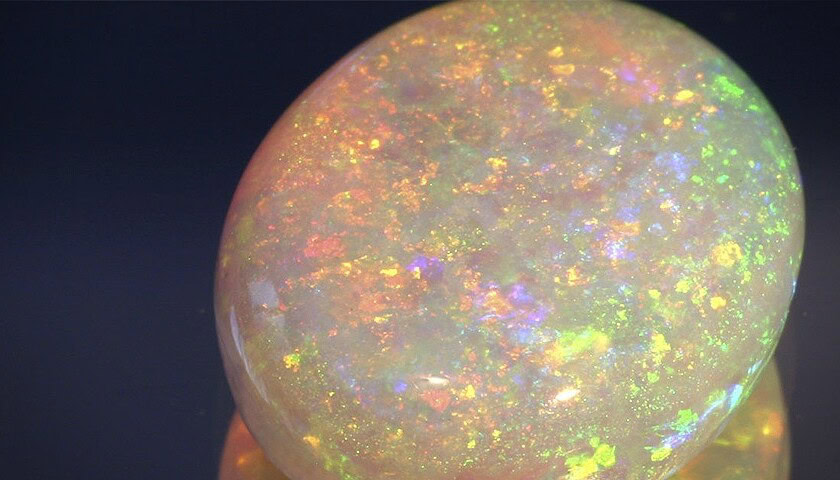
Crystal opal is transparent to semi-transparent and displays a vibrant play-of-color. Designers often use these opals in settings that allow light to enhance their colorful display.
Geographic Classification of Opals
- Andamooka Opal: Famous for matrix opal from South Australia.
- Australian Opal: The world’s leading source, producing various opal types.
- Coober Pedy Opal: Known for white opal, this South Australian town is dubbed the “Opal Capital of the World.”
- Ethiopian Opal (Brown Opal, otherwise known as Ethiopian Chocolate Opal): Notable for its vibrant colors and increasing market presence.
- Honduras Black Opal: Known for its unique black matrix opal.
- Lightning Ridge Opal: Famous for black and crystal opal.
- Mexican Opal: Renowned for fire opal with vivid colors.
- Louisiana Opal: Quartzite cemented with precious opal, found in Louisiana.
- Peruvian Opal (Andean Opal): Known for common opal in pastel shades of blue, green, and pink.
- Oregon Opal: Oregon is renowned for its high-quality and diverse opal varieties, primarily sourced from Opal Butte in Morrow County. These opals, formed from volcanic activity, range from common to precious types, including hyalite and rainbow opals, noted for their vibrant play-of-color.
Additional Opal Varieties
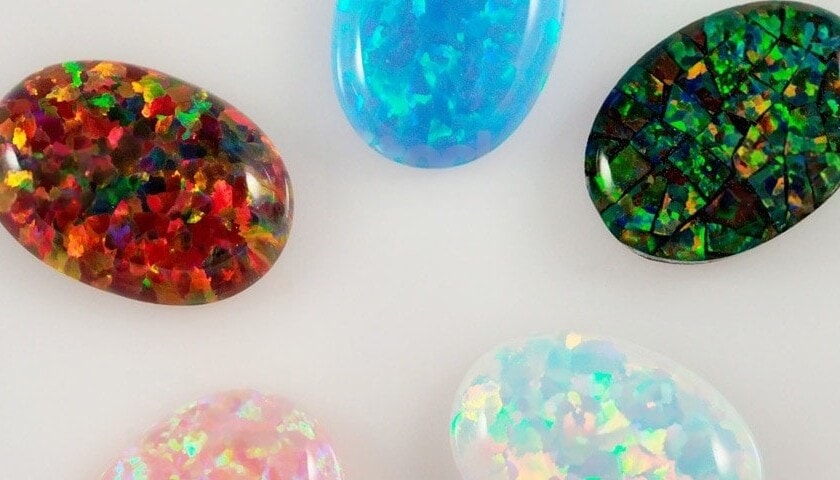
- Blue Opal: Common opal in beautiful blue shades, often found in Peru, Oregon, and Indonesia.
- Pink Opal: Known for its lovely pink hues, primarily sourced from Peru.
- Morado Opal: Purple opal from Mexico, known as “Morado,” meaning purple in Spanish.
- Violet Flame Opal: is a unique variety of opal found in central Mexico, characterized by its vibrant purple color due to fluorite inclusions.
- Harlequin Opal: Displays rectangular or diamond-shaped color patches.
- Contra-Luz Opal: Best displays play-of-color when the light source is behind the stone.
- Pinfire Opal: Features pinpoints of color throughout the stone.
- Cat’s-Eye Opal: Rare opal displaying a chatoyant effect, similar to a cat’s-eye.
- Opalized Wood: Petrified wood composed of opal.
- Mookaite Opal: Opaque gem material from Western Australia.
- Fluorescent Opal: Exhibits fluorescence under UV light.
- Opalite: Can refer to common opal or a plastic imitation opal.
- Water Opal or Hyalite: Clear opal without play-of-color or bodycolor.
- Dendritic Opal: Dendritic Opal, also known as Moss Opal, features unique tree-like inclusions due to iron and manganese, giving it a distinctive appearance.
Assembled Stones
- Opal Doublet: Thin layers of precious opal glued to a base, often with a protective cap.
- Opal Triplet: Includes a transparent cap to protect the opal and enhance its appearance.
The Science Behind the Sparkle
So, what gives opals their incredible play-of-color? It all comes down to microscopic silica spheres arranged in a grid-like pattern within the stone.

When light passes through these spheres, it diffracts, creating the rainbow-like display we adore. It’s like nature’s version of a disco ball – who wouldn’t want that?
Metaphysical Properties
Opals are known for their calming properties, easing stress and depression, and helping to center the mind. They are particularly soothing for children and can alleviate nightmares and fears of imaginary friends.
As a protective stone, opal shields against negative thoughts and energies, and can create a “cloak of invisibility” in challenging situations.
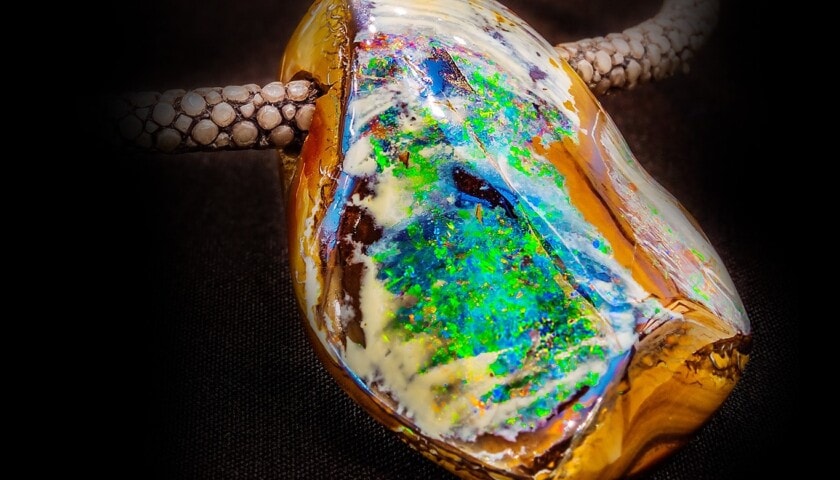
Opals resonate with the energies of the Mother Goddess, making them excellent gifts for mothers or mothers-to-be. They help overcome fears related to childbirth and provide emotional support during pregnancy and motherhood.
Opals are also associated with love and passion, enhancing feelings and releasing inhibitions. They are beneficial for creative individuals, especially those working in water-related professions or the arts.
Opal Healing Therapies
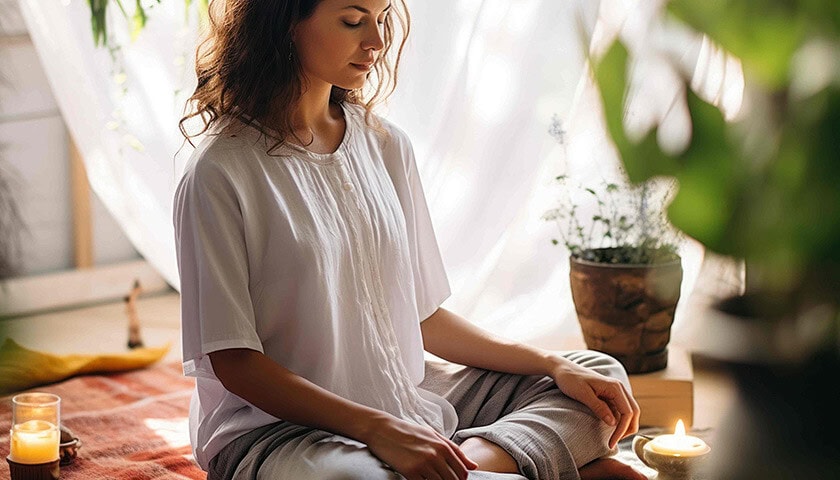
Physical Healing Energy: Opals support the health of the eyes, hair, nails, and skin. They can balance the body’s water content and are believed to help with infections, blood purification, and hormonal regulation.
Emotional Healing Energy: Opals bring thoughts and feelings to the surface for examination and help release negative behaviors, fostering a positive and loving mindset.
Chakra Healing and Balancing Energy: Different colors of opal can stimulate corresponding chakras, with the play-of-color linking them to the Crown Chakra, infusing the aura with full spectrum Light.
Spiritual Energy: Opals enhance spiritual light in the aura, awaken psychic abilities, and aid in shamanic journeys and past-life regression. They are also used to connect with angelic beings and water spirits.
Meditation with Opal
Opals promote a calm and centered mind for meditation, allowing one to connect with Earth and its elemental joy.

Common opals ground the emotional body, while precious opals magnify spiritual energy for deep inner work. Fire opals induce a passionate state of enlightenment, and boulder opals connect with earth and plant spirits.
Opal in Divination and the Angelic Realm
Opals are revered for opening the mind to visions and are used in prophecy and divination. They attract and connect with angelic beings, offering protection and guidance.
Opal Goddess Connections
Opal honors several goddesses, including Cardea, Persephone, Chirakan-Ixmucane, Cyhiraeth, Dana, and Ixchel, each embodying various aspects of protection, growth, and creativity.
Where to Find These Beauties?

Opals are mined worldwide, but if you want the crème de la crème, look no further than Australia. The land down under produces over 90% of the world’s opals, especially from regions like Lightning Ridge and Coober Pedy. Not all opals are created equal, though, so let’s explore the different types.
Practical Uses
While opals are stunning, they’re also quite practical. They’re used extensively in jewelry, from rings and necklaces to earrings and brooches.

However, opals are softer than many other gemstones, so they require a bit of tender loving care. Handle with care, and your opal jewelry will sparkle for generations.
Fun Facts
- October’s Birthstone: Opal is the birthstone for October. If you’re born in this month, you’ve got one dazzling gem to celebrate with.
- Opal Superstitions: In the past, opals were believed to bring both good and bad luck. But let’s be real, how can something so beautiful be anything but lucky?
- Water Content: Opals contain up to 20% water, which is why they can be sensitive to heat and dryness. Keep them hydrated – like your favorite plant!
Conclusion
Opals are truly one-of-a-kind. Their stunning play-of-color, rich history, and metaphysical properties make them a gemstone like no other. Whether you’re a gem enthusiast or a casual admirer, there’s something about opals that’s simply irresistible. Ready to add a touch of rainbow magic to your life? Dive into the enchanting world of opals and let their beauty captivate you.
So, what are you waiting for? Go on, explore the wonders of opals and find your own piece of the rainbow.

